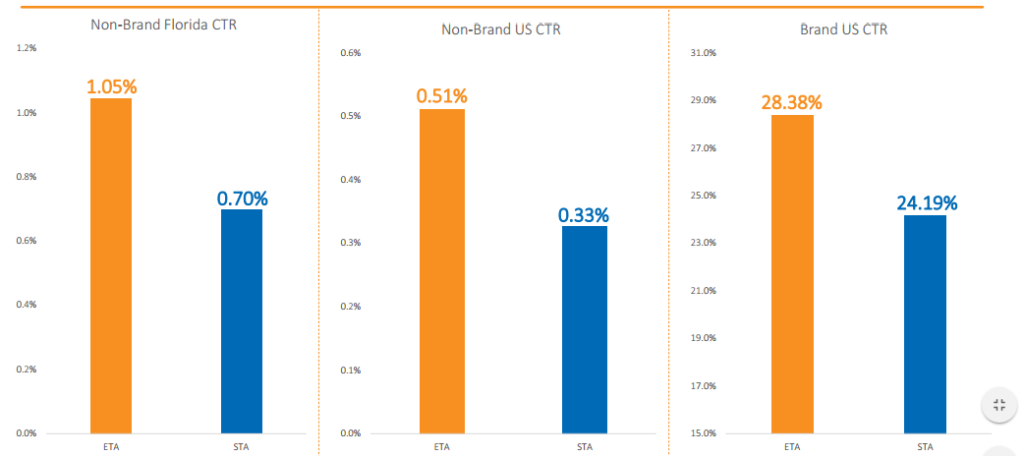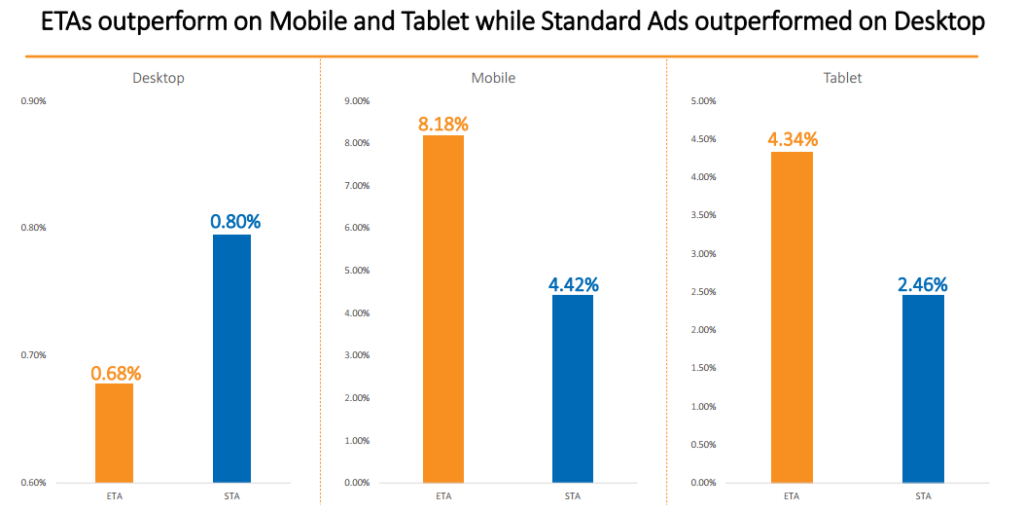Not really – But at first glance it looks like they do so be careful when analyzing your campaigns.
Like any Google product, there is generally an early lift for fast adopters then performance levels out as it becomes a ubiquitous practice. Google, in their infinite wisdom, decided that what people wanted to see was more text occupying the top of search result pages, but based on my data (and some data from colleagues and friends of mine) the conversion rate and value does not follow with the lift of CTR.

So we see it does have an across the board lift in CTR but this data set isn’t telling the whole story I found after some further investigation.
For the branded lift in CTR I didn’t see a corresponding drop in SEO traffic, but with this particular company there is a lot of promotional volatility so it’s difficult to show a correlation. I’d probably chock ETAs to a net positive with branded terms because we have more control over the message, which is generally a good thing.
As for the non-branded terms, let’s take a look at another set of data:

Aha! Desktop… did worse and tablet and mobile did most of the CTR improvement heavy lifting. Not what I was expecting, to be honest.
So are we seeing the dreaded “fat-finger” effect here? Mobile browsing habits are already notoriously flippant and now Google has given searchers a bigger target to hit at the top of SERPs. After looking at the conversion data and cost data, this might be the case as ETAs has close to an 80% increased CPA than standard text ads. What’s crazy is this data gets even worse as we split out search partners and the Google network as the ETAs are currently only displaying on the Google network. I saw a cost-per-conversion for standard text of $5.17 whereas the ETAs had a cost-per-conversion of over $11.00! Another unintended consequence was the click-share of mobile eating up a bigger piece of the campaigns budgets because of their “performance” increase.
So in conclusion, it appears that expanded ETAs are raising CTRs for all the wrong reasons. CTR, at first glance, seems like a good metric for measuring an ad’s match with a browser’s intent but as soon as you dig into the conversion data here it all falls apart. The primary benefit of ETAs is search real-estate and Google might be losing sight of what people are using their search engine for- to get a relevant answer to their question. There definitely might be confounding factors at play here, as well as a lack of history conversion data to optimize around, but I’m proceeding very carefully moving forward.














